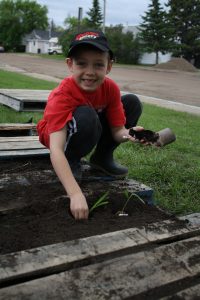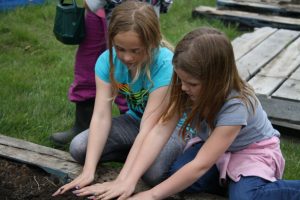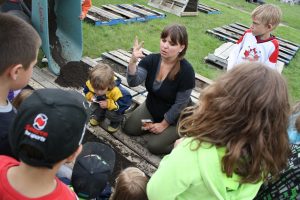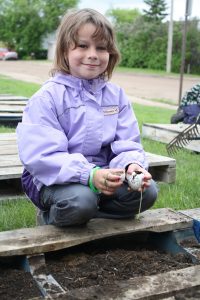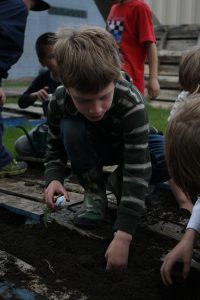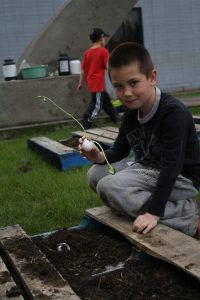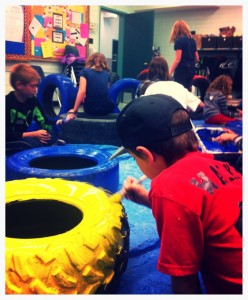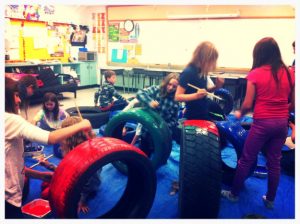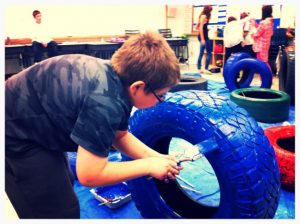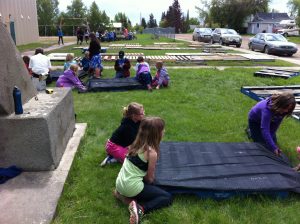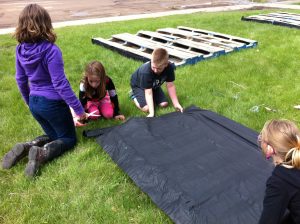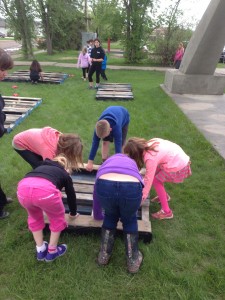Driving back from my second visit to Waldheim, my traveling companions and I decided to take a little detour. We veered off course a bit to visit a place I have been wanting to see for years: The Crooked Forest.
Adding to my own anticipation, the detour took us down two unmarked dirt roads–the latter significantly narrower than the first. And then, all of a sudden, in the proverbial ‘middle of nowhere’ was a grove of unusual trees, with a small sign designating that we had reached our destination.
The Aspen in this bush are crooked, gnarled and shaped in such a way that they are worth the trip just for the visual experience alone. In some places the trees twist along the ground, and then in other places they coil through the air.
According to the sign the trees are “a botanical mystery.” And indeed they are. But I mention them here for another reason.

In the Crooked Forest!
After posting this photo on Facebook and describing my own experience–bodily sensations, batteries being drained, cell service immediately ending, etc. – I received numerous replies telling similar tales. People not only shared their experiences but they also explained their rationale for the mysterious trees.
A Google search amplified the plethora of local folklore ten-fold. The explanations for said forest ranged from alien urine, to energy vortexes, to bacteria.
Regardless of the reason why these trees grow they way they do, the effect of their peculiarity in terms of culture, is a stark reminder of the importance of place in local folklore. In this instance, this tiny grove of trees is the source of countless stories and tall tales. This grove of unusual trees is a microcosmic example of how local folklore defines a people and community.
The stories we tell about geographical phenomena, old buildings, landmarks of various sorts, places of significance in general, all help to form and define our communities. They tie people together via experience and belief and create micro-cultures that contribute to a larger, more diverse macro-culture.


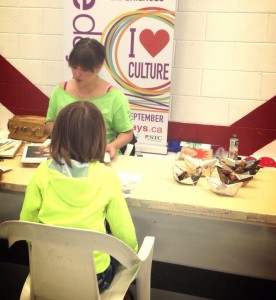
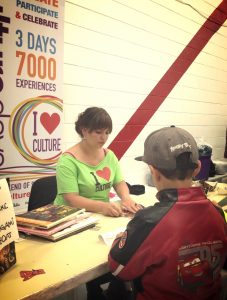
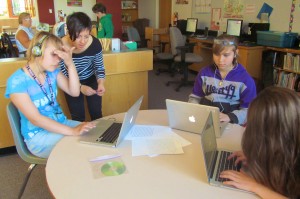 One of my favourite sayings is “the shortest distance between two people is a story” and it proved to be true, yet again, as we got to know one another through our stories. I stood back and watched as kids discovered details about their classmates’ lives and saw one another from new perspectives. They demonstrated empathy and were able to recognize similarities in their shared experiences.
One of my favourite sayings is “the shortest distance between two people is a story” and it proved to be true, yet again, as we got to know one another through our stories. I stood back and watched as kids discovered details about their classmates’ lives and saw one another from new perspectives. They demonstrated empathy and were able to recognize similarities in their shared experiences.